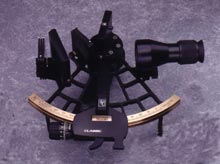
|
|
|
|
|
|
|
|
|
|
 |
|
|
| > MANAGEMENT AND INTEGRATED PLANNING SYSTEMS | ||
| Vision and Scope | ||
|
One of the most powerful uses of the Integrated Planning Model is
in the development of an organizational understanding of its vision and
scope. As a consequence of the breadth and depth of these models, they have
the inherent capacity for describing a range of possibilities for the
organization. The models can easily be used to develop a more
Vision relates to the whole universe of possibilities both at a point in time and then throughout all future time. The territory over which vision can range is literally infinite, and the capacity to view it is dependent only on one’s ability to integrate information and project possibilities into the future. The creative process concerning the description of such a possibility space is always, to some extent, random and indeterminate. Usually a group is tasked with the development of a vision statement. Some form of group process is applied in which ideas surface, are written down and discussed. The ideas that garner the most support (i.e. are backed by the most power) receive the most attention. There are many effective methodologies used to derive and winnow such ideas. The problem with this approach, however, is that the relative merits of an idea can only be evaluated in relation to the other ideas proposed. There may be many (or even an infinite number) of better ideas that never get attention because they did not enter anyone's head. There are also many good ideas that get discarded because the context of the idea was not shared by those with influence. Models can help overcome many of the difficulties inherent in less structured approaches. Effectively, the generation of models reduces the possibility space to a simpler and more manageable modeled space that itself represents a kind of universe. This universe is constructed with the input of all participants and reflects a consensus of the group. The modeled space is then used as a basis for the systematic examination of a number of possibilities that become the vision. The determination of scope is made by responsible parties to reduce the vision ― to limit the activities or thrusts of the enterprise. Once a clear vision is developed with some indication of the required pathways, resources, and intermediate stages, a decision must be made as to the amount of the vision the present organizational resources and competencies can accommodate. This becomes the scope. This decision has a great deal to do with the nature of corporate leadership and their willingness to commit resources to the projects outlined in the vision. The question is: what does management want to do, given limited resources. The statement of scope may be attached to some time frame. For example, "The scope of activities over the next 18 months will include." It is a decision to focus. Models may be revisited in order to prioritize aspects of the vision, the scope being those projects that satisfy a set of criteria. Those criteria might include urgency, competitive advantage, potential for future opportunities, etc. Specific models might be developed to describe some future scenarios and the potential benefits to the organization. Decision models can be developed to help clarify the advantages of one course over another. The key to clear thinking is a clear understanding of the various levels at which the organization functions. Models make all levels explicit: the inputs, the processes, the outputs, the users, the user's users, the environment, etc. Smart people with the right guidance can build powerful models. But these models must be designed to address the questions being asked at a certain level. High-level models are required for high-level managers to make high-level strategic decisions. The goal is to press the edge of the possibility envelope, which will continually expand as managers become more comfortable using models for thinking about complex business settings. |
||

 restricted agenda from that set of possibilities that maximizes some
measure of performance given limited resources. The concepts of vision
and scope are interrelated in some interesting ways. Where there is
vision, there is always implicit a higher level scope that defines the
areas in which the vision is defined. Wherever there is scope, there is always
some higher level vision that provides the context in which the scope is
defined. The question the organization would like to answer is, "Where
are the stars and how do we chart a course using them as a guide?"
restricted agenda from that set of possibilities that maximizes some
measure of performance given limited resources. The concepts of vision
and scope are interrelated in some interesting ways. Where there is
vision, there is always implicit a higher level scope that defines the
areas in which the vision is defined. Wherever there is scope, there is always
some higher level vision that provides the context in which the scope is
defined. The question the organization would like to answer is, "Where
are the stars and how do we chart a course using them as a guide?"